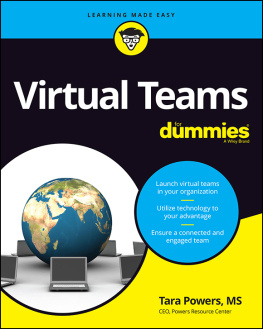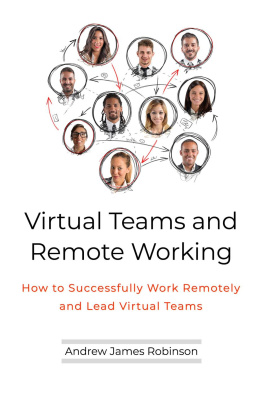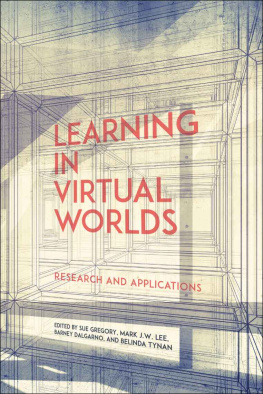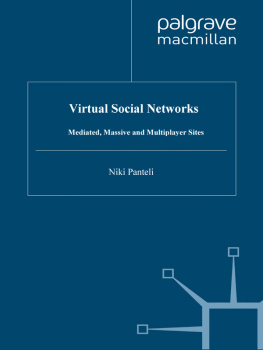This book would not exist without the contribution of the leaders whom I have had the privilege to accompany for many years through the ups and downs of their virtual leadership. I would like to thank in particular William, Silvia, Barbara, Matthew and Sten as well as the many leaders from MilkCo. Although I mention them here in their disguised identities I know that they will recognise themselves: thank you for your dedicated cooperation, trust and openness to experimentation. It has been a really exciting and rewarding experience that will stay with me for the rest of my life.
I would like to thank the Digital Natives who contributed to this research: Julia, Katherine, Marion, Priscila, Pamela, Diego, Erika, Maya, Eilen and Sam. What a pleasure and sense of discovery to work and reflect with you all. Thank you for helping me to understand your world!
For me virtual leadership has become a journey of on-going learning and I would like to thank all the clients who have embarked on a virtual project with me. Thank you for your trust and the rich reflection that we have had so far and continue to have on a regular basis.
I also would like to thank Ina Smith, Dev Mookherjee and Duncan Smith from the then Leadership Team of Ashridge Consulting who have supported me, always with a word of encouragement and trusting me in the most unusual and daring plans. I also would like to express a huge thank you to my Doctoral supervisor Kathleen King for her dedication and care. Thank you also to the Doctoral Faculty and my peers for their helpful contribution and challenge.
Furthermore I would like to thank the colleagues at Ashridge who have been willing to take the challenge and embark with me on this virtual leadership work: thank you in particular to my ex-colleague Sally Hulks for having been such a wonderful partner in the very early hours of the work. Thank you to Sue Jabbar and Andy Copeland for their dedication, patience and endless efforts to continuously improve the quality of the learning experience that we offer to our clients in the virtual space.
Publishing this book has been in itself a virtual project. I would like to thank Paul Jervis of Libri Publishing for his flexibility and for agreeing to work virtually with me and for his ongoing guidance throughout the whole process. Last but not least thank you to my colleague Elizabeth Braiden for being such a good sparring partner and for her relentless checking of consistencies, with her amazing capability of combining the helicopter view with a sharp sense for details.
An Introduction to My Key Fellow Researchers
(In order to protect the identity of my co-researchers I have changed their names and those of their companies. I do so with all managers and companies throughout this book.)
William is a Belgian manager at a senior level in CompCorp. He has led teams (approximately 1,500 people in total) over six plants in Belgium and Sweden in a blend of face-to-face and virtual work for the last three years. I got to know William during a leadership development programme which was run by Ashridge Consulting. I soon developed a strong respect for William, in particular for his attitude, which I felt was open, thoughtful and engaging. During the time that I worked with him, William had to overcome extremely challenging situations in terms of management and leadership, and the need for him to lead virtually became ever more critical.
Sten is British and works for a multinational process engineering company. At the time of my research Sten was in charge of a particular market segment in the Nordic and Baltic countries and the UK. He was responsible for a virtual team including five direct reports based in different countries and another seven indirect reports in other countries. He was based in the UK while his boss was based in Finland. I had known Sten for at least ten years. I got to know him when I was working at RolloCorp and we did a lot of work together. Sten and I got on well and, as with William, I have always appreciated his openness. My work with Sten stopped earlier than that with William and Silvia because, after about a year, Sten changed his role to local Sales Director, still within the same organisation, but without the regular need to work virtually.
Silvia represents a different case. I have never met her face-to-face. I only got to know her within the context of my research. She was recommended by a friend and immediately agreed to participate in the research. Silvia is German and works in Sweden for a global telecommunication company: she leads a team across the world (Japan, China, Korea, US, Brazil, Mexico, Hungary and Sweden). Silvias is a typical matrix-based team, which means that she has no direct reports. At the time I started working with Silvia the team had met face-to-face only twice in three years.
Some way into my research, I organised and facilitated a collaborative inquiry with three virtual leaders, all based in different organisations. This proved to be a very rewarding and rich experience as well. The people engaged in this inquiry were:
Matthew , who was working globally as an accounting director for an IT company
Barbara , the CEO of an NGO working across geographical zones including India, Africa and the UK
Silvia , who was mentioned earlier as one of the leaders I had been accompanying over the previous two years on a one-to-one basis.
None of the three inquirers knew each other before our work together and they did not meet face-to-face during the process.
I also introduce MilkCo , a global organisation with whom I have worked virtually on a major strategy project. I refer to this assignment throughout the text as it occurs at the junction of my research and my consulting, and provides a wealth of useful insights.
My intention with this book has been to provide some practical help in the form of invitations, based on in-depth and robust reflection and research, that leaders can choose from and experiment with in order to learn and succeed in their virtual leadership. It will be up to readers to decide whether I have succeeded in this undertaking or not.
What this book cannot provide are conclusive statements about what it takes to lead effectively virtually because, as I have mentioned previously, much territory remains to be uncovered and much remains to be learnt.
This book is an invitation to try some practical experiments, which should lead to further reflection and on-going learning. It is a guide to help you becoming the virtual leader that you will become, and I wish you every success and luck in this endeavour.
Keep practising
I would like to complete this exploration of virtual leadership with the view of MilkCos virtual leaders. Several among them underlined the need to keep practicing, hence emphasising the concept of virtual leadership as a new discipline:
Now I think that we have learnt a lot, but I can forget. I need to continue using it
You need to do this frequently in order to increase your efficiency. It is a new discipline that needs to be practised.
As you will have realised from the stories virtual leadership is not only a question of mindset and assumptions to be revisited. It is also a question of training and developing new skills (e.g. listening with your intuition). In other words it is about developing new muscles and, as in any sport, muscles need to keep active to strengthen and remain strong.
What you might be wondering about
Some readers might wonder why I did not include anything specifically addressing the challenge of working with multi-cultural groups in the virtual space. My research has shown that the cultural dimensions, for example the ones defined by Hofstede (see www.geert-hofstede.com) or Trompenaars & Hampden-Turner (1997), are not necessarily proving to be relevant in the virtual space. Different dimensions seem to become more significant: the use of silence (see Invitation 1) or the different ways in which trust can be generated (see Matthews story in Invitation 6).






